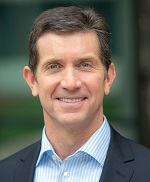SINGAPORE--Johnson & Johnson was hit hard by weaker currencies across Asia in the fourth quarter with the company struggling to hedge risk, indicating to executives that further impacts to the bottom line in these fast-growing markets are expected in 2015.
"Currency headwinds have increased quite substantially since we last spoke with you in October of 2014, negatively impacting both sales and earnings in our guidance for 2015 to a greater extent than we had anticipated," said Dominic Caruso, vice president of finance and chief financial officer, on the Jan. 21 earnings call.
The Japanese yen has swung sharply lower from a level around 110 to the dollar at the start of October to an early December level of nearly 124. Other currencies such as the Indonesian rupiah have dipped more than 10% to levels last seen in 2009 as investors' dollars flow back to the United States on expectations the Federal Reserve will hike interest rates this year.
Overall effective currency exchange rates negatively impacted results by 7.9%, according to Louise Mehrotra, vice president of investor relations on the earnings call.
"We are not predicting the impact of currency movements," Caruso said.
"But to give you an idea of the potential impact on sales if currency exchange rates were to remain where they were as of last week for the balance of the year, then our sales growth rate would decrease by nearly 5.5%, reflecting the recent weakening of the euro and other major currencies against the U.S. dollar. Thus, under this scenario, we would expect reported sales to reflect a change in the range between negative 3.5% and negative 4.5%, for a total expected level of reported sales between approximately $71 billion and $72 billion."
 |
| Johnson & Johnson CEO Alex Gorsky |
However, Alex Gorsky, chairman and CEO, pointed to growing demand for healthcare products by expanding access across the vast portfolio of the company. Johnson & Johnson ($JNJ) last year moved a significant portion of its international business operations to Singapore to be closer to markets in the region and build scale.
"And we're growing very well in emerging markets and are capitalizing on the scale, depth and breadth of the portfolio we can offer to governments, large healthcare systems, and large payers around the world, to add value and help patients. And we grew sales in China by nearly 15% on an operational basis last year," Gorsky said.
"Also while I was in China for the APEC Economic Leaders' Summit in November, I announced plans to optimize our expertise in oncology to help the Chinese government fight lung cancer. It's estimated that by 2025 there will be 1 million cases of lung cancer. And while China has 20% of the world's population, they've got about 30% of the cases."
In response to a question from Derrick Sung, an analyst with Sanford C. Bernstein & Co., Gorsky further broke down the outlook for key emerging markets.
"We've continued to see good growth in China. On a full-year basis, we saw double-digit growth in China and close to that in the baroque regions. Although obviously with Russia, that's been a particular challenge over the last year, given some of the things that we faced," Gorsky said.
"South America, a little bit more with Venezuela. Brazil has been a little bit mixed. We saw some challenges in our consumer segment. In some of the other areas we haven't felt that as much. But I think that's the global sense that I would give you."
But David Lewis, an analyst with Morgan Stanley, said the figures show growth rates abroad slowing since 2012 and asked Gorsky to describe why international is decelerating.
"Look, there's a lot of different moving parts when we talk about it. I think first of all, let's talk about Europe. Europe, we saw a contraction initially and then Europe actually performed better. As I mentioned earlier in the guidance, going forward we're watching it closely. And even there, you've got Southern Europe versus Northern Europe.
"Our consumer group has had some other challenges that we don't think necessarily are related to the macroeconomic environment. Frankly, they have to do with some of our own products and ingredients, but we think that we are on a better path there," he said.
"And then if I look to South America, we've been most challenged there in Venezuela. Brazil, definitely we feel there was some slowdown in the back end of the year. We're just going to have to watch it closely as we head into 2015."
- here's the release
- here's the webcast